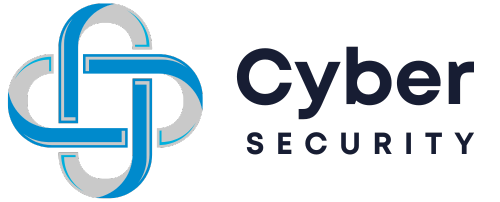How Secure Is My Application Hosted on the Cloud? A Cybersecurity Perspective
The consistent advancements of new technologies like cloud computing have reformed the industry by providing incredible flexibility, scalability, and cost-efficiency to businesses of different methods. However, along with great simplicity also comes considerable responsibility — particularly regarding cybersecurity. If your software is hosted on the cloud, the question of whether it is secure is not just relevant — it is critical.
Here is a guide on the major cybersecurity issues when it comes to cloud-hosted software, what the risks are and the best practices for ensuring your data, apps etc. are safe in the cloud.
Why Is Cloud Security a Concern?
Software Cloud Hosting is when your software is hosted on the cloud, with critical applications, sensitive data, and resources stored and accessed remotely via the internet. Cloud service providers (CSPs) take their security seriously, but relying entirely on their security measures can expose your software to cyber threats.
Key Concerns:
- 1. Data Breaches: unauthorized access to sensitive information stored in the cloud.
- 2. Data Loss: Critical data being deleted, accidentally or maliciously, and not backed up.
- 3. Misconfiguration: Inaccurately configured cloud components that leave them vulnerable.
- 4. Shared Responsibility Model: Delegation of security responsibilities between you and the CSP.
The first step in security for your cloud-hosted software is to understand these challenges.
How Do Cloud Providers Approach Cybersecurity?
Major cloud service providers such as Amazon Web Services (AWS), Microsoft Azure, and Google Cloud invest massive amounts in cybersecurity for their services. Some of the main security components they usually offer are:
- 1. Data Encryption: When data is at rest or in transit, encrypt it.
- 2. Access Controls: Identity and access management (IAM) tools.
- 3. Physical Security: Protecting data centers with superior physical safeguards.
- 4. Threat Monitoring: Using AI and machine learning for real-time detection and response to threats.
- 5. Compliance Standards: Compliance Standards Are Their Services Compliant With Industry Regulations?
Though these measures are strong, they are by no means foolproof, and companies themselves play a role in securing their cloud-hosted software.
Cloud-Hosted Software: Key Risks
1. Misconfigurations
Incorrectly configuring the cloud is one of the top ways the cloud is vulnerable. Examples include:
Some of these mistakes can lead to unauthorized access, data breach or unintentional exposure of sensitive data.
2. Insider Threats
The risk from users (employees, contractors, or third-party vendors) with access to your cloud environment, whether deliberately or accidentally. Data leak or compliance violation or privilege abuse may be an insider threat.
3. Cyberattacks
Some examples of cyberattacks directed at the cloud include:
- 1. DDoS Attacks: Attacking your cloud-hosted software to make it unavailable due to overload.
- 2. Credential Theft: Accessing your cloud resources with stolen credentials.
- 3. Malware Infections: Infecting Cloud Systems With Malicious Software
4. Shared Responsibility Model
Security in a public cloud environment is shared between the provider and the end-user. As CSPs protect their infrastructure, you need to ensure:
- 1. Configuring your software properly.
- 2. Managing user access.
- 3. Protecting sensitive data.
Neglecting your part of the equation can open as well as vulnerabilities.
Cloud Security Best Practices
1. Use Demonstrated Access Controls
- 1. Enable multi-factor authentication (MFA) for every user.
- 2. Limit user permissions by using role-based access control (RBAC).
- 3. Periodically review and terminate superfluous privileges.
Such measures keep your cloud-based software safe from unauthorized access.
2. Encrypt Data
Encryption is the most demonstrably effective methods of protecting data. Ensure that:
- 1. Strong encryption algorithms protect data at rest.
- 2. Data TLS or SSL protocols are used for data in transit.
- 3. You handle encryption keys securely, typically with a Key Management System (KMS).
Encryption protects with public/private keys, making it so that even if dumped, the DNA can only read the encrypted data.
3. Keep a Regular Eye on Cloud Activity and Conduct Audits
Use tools such as Cloud Security Posture Management (CSPM) to continuously monitor for misconfigurations, vulnerabilities, and anomalous activities. Regular audits help ensure adherence to security standards, which allows organizations to mitigate potential risks in their environment.
4. Backup Data
Regularly back-up mission-critical data and apps:
- 1. Store backups in secure locations in other geographic areas.
- 2. You will also need to test the backups regularly for data integrity and accessibility.
Backups safeguard you against data loss due to cyberattacks or accidental deletions.
5. Deploy Threat Detection and Response
Branch out into real-time detection and response with Security Information and Event Management (SIEM) and Intrusion Detection Systems (IDS) cleaning up the next steps. Cloud-native solutions (AWS Guard Duty, Azure Sentinel, etc.) are enabled for cloud.
6. Understand Your Share of the Responsibility
Define your role in the shared responsibility model by:
- 1. Audit the security policies of your CSP.
- 2. Training your team on cloud security best practices.
- 3. Work with your provider to meet your unique security requirements.
How to Choose the Right Cloud Service Provider
Although cloud providers implement some level of security, it may vary significantly among providers. Assessment of CSP on following parameters:
- 1. Compliance Certifications: Make sure that they comply with relevant industry and regulatory standards.
- 2. Security Features: Search for antigen like inbuilt encryption, IAM, observation.
- 3. Service Level Agreements (SLAs): Know what they promise regarding uptime and data protection.
A key aspect of securing your software is selecting a provider with extensive experience in security best practices.
Conclusion
Cloud-hosted software has great advantages, but there are also specific cybersecurity challenges associated with it. Though cloud service providers have strong security safeguards in place, the responsibility for securing your cloud-hosted software falls squarely on your shoulders.
And that through understanding the risks, adopting best practices, and working with an appropriate cloud provider you can achieve a secure software, better sensitive data protection, and operational continuity to meet evolving threats. It’s not merely a technical requirement; cybersecurity is a fundamental requirement in any successful cloud strategy.

